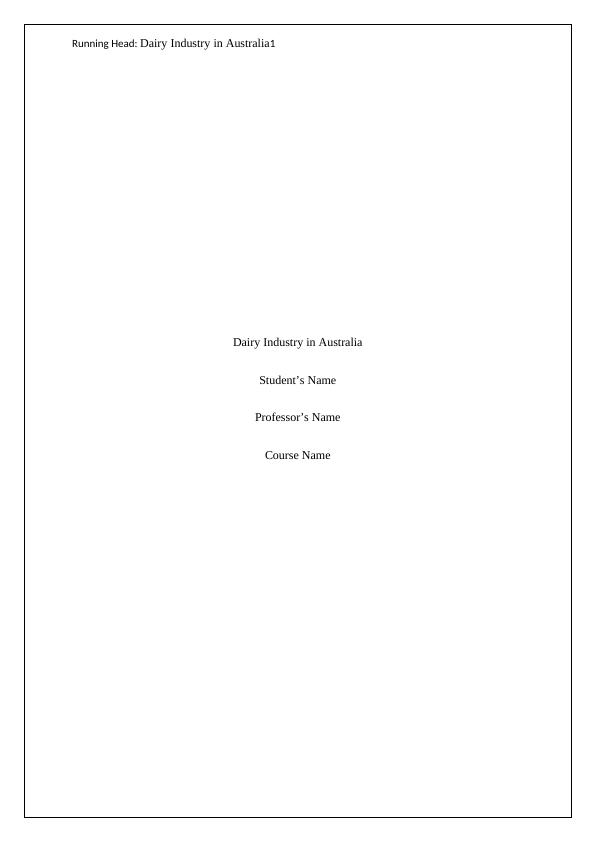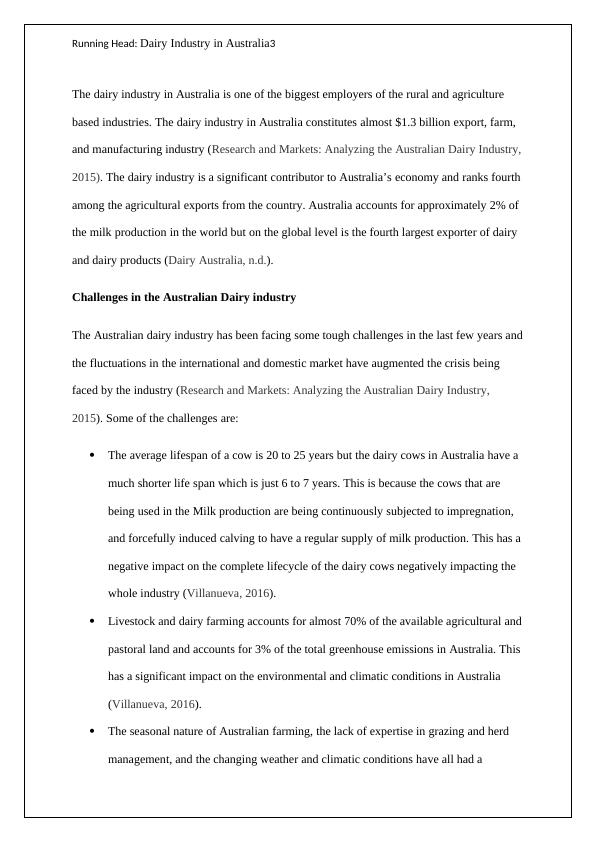1003MKT - Dairy Industry in Australia
8 Pages1317 Words126 Views
Griffith University
Australian Dairy Industry (1003MKT)
Added on 2020-03-04
About This Document
The below document discusses the Dairy Industry in Australia. The document also discusses the Challenges in the Australian Dairy industry and Growth Opportunities and Potential for Australian dairy Industry.
1003MKT - Dairy Industry in Australia
Griffith University
Australian Dairy Industry (1003MKT)
Added on 2020-03-04
ShareRelated Documents
End of preview
Want to access all the pages? Upload your documents or become a member.
Dairy Industry in Australia: Case Study
|13
|2765
|104
MKG721 - Food Marketing | Australian Dairy Industry
|10
|1620
|42
104803M - Australian Dairy Industry analysis - Case Study
|20
|3321
|40
(solved) Economics for Business PDF
|13
|2757
|30
Australia Agriculture Reforms: Impact on Economy and Farmers
|13
|3321
|78
Global Food Systems
|10
|2017
|431



